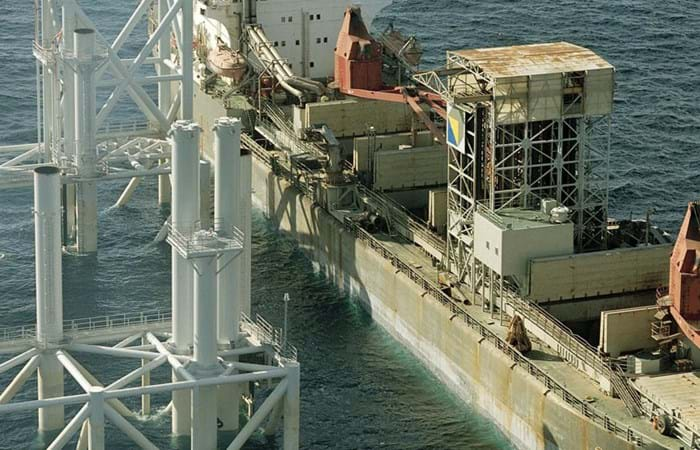Hanze, 200 kilometers offshore Den Helder in block F/2 of the North Sea, is the first operated development in the Dutch sector by Germany's Veba Oil. The oilfield reserved approximate 34 million bbl, plus 40 bcf of associated gas.
The field has been developed with nine wells, using an 8,100-ton production platform and gravity base. In this 15,600 ton GBS, which has a capacity of 150,000 bbl, oil is stored after being processed at the platform. The GBS comprises a 14-m high steel tank with skirts underneath and a framed tubular structure. Hyundai Heavy Industries were the main contractor on the Engineering, Procurement, Installation & Commissioning project (EPIC), with Smit Maritime Contractors as the installation (sub)contractor. Boskalis Offshore was awarded all seabed rectification works and executed them with full dedication of spreads and resources.
